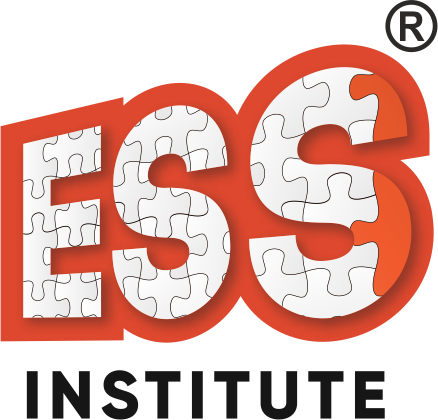Whether you are currently holding a business website or going to get into it soon, this is specially going to help you out. An experienced trainer from the top digital marketing institute in Delhi have come up with the most important things you need to know about the ranking your website in 2024.
SEO is one of our most effective strategies to get traffic to our site. We’ll go over the basics of SEO and cover things like what it is why it’s important and how it works.
What is SEO?
SEO stands for search engine optimization and it’s the process of optimizing content to be discovered through a search engine’s organic search results. Let’s talk a bit about how they work.
How does search engine work?
If you’re completely new to SEO, then it’s easiest to think of search engines as libraries. These libraries instead of storing books, will store copies of websites and web pages. When you search for a query, the search engine will then look through all pages in its index and try to return the most relevant results. SEO helps demonstrate to search engines that your page is the result.
Before you type any keyword, Google plays a very important role. It has already done some functions. As we all know, there is a lot of data on the internet, that is, the World Wide Web. Google’s crawler or you can also call it spider, crawls all that data that we used to post on Google websites and it picks up all that data and sends it to its local server. The meaning of a server is that it is saving all the data on Google’s hard disk.
What do they do to these local servers? They do indexing, which means all the data on the local server of the search engine gets divided into categories so that Google can give relevant results to its users.
After the indexing step, the ranking algorithms of Google come into play.
We all talk about a lot of ranking algorithms, and how Google gives ranking. Based on those ranking algorithms, Google shows you the results in the ranking. Because all the indexing is done, the categories are divided. But in it, which result do you have to show first; all these things are done by the ranking algorithm.
After all this, the result page you see is called SERP which stands for search engine result page.
This is how Google works.
Now, we will be getting into some technical aspects of SEO and also some do’s and don’ts while optimizing your website.
There are two ways of optimizing a website which are termed as on page and off page SEO.
On-page SEO
On-page optimization as the name suggests is the practice of optimizing web pages to rank higher and get relevant traffic from the search engine. On-page optimization includes both content and HTML source code optimization. Search engine optimization can be very complex. When you look at the hundreds of signals that go into SEO, they can be broken up into either relevancy or popularity.
We’re going to talk about the on-page factors. These are the factors that you have a direct impact on and you can make a small tweak and have a big impact on organic traffic with your on-page relevancy factors.
The primary, on-page relevancy factors that we will cover here are title tags and Meta descriptions, header tags that are used for headlines and subheadings, website URL and URL structure, internal links, keyword usage, and sitemaps.
Let’s start with the title tag.
TITLE TAG:
This is also called a page title. The page title is not shown on the page rather it is displayed on the browser tab and this is what makes it highly important. In addition to being displayed on the browser tab, it is also the title tag or the page title that is shown on the text in the Google search results as the link to the page. The page title influences both the click-through rates and people’s first impressions of our website.
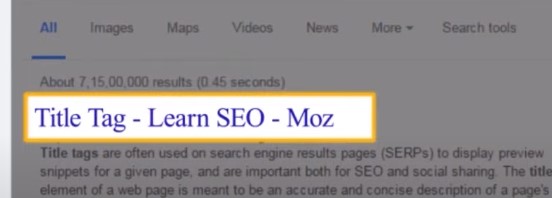
META DESCRIPTION:
The Meta description can be a bit confusing. The Meta description is in the code and it does not influence rankings, but it does influence clicks. People will see your snippet or your page information in the search engine results. Gray text is the Meta description. If you don’t have a Meta description then it may pull information from the page. You can affect this and improve the chances of your Meta description appearing.

Header Tags:
These are also referred to as the heading and subheading and this is how html was built when the web was first created.
It enables a logical hierarchy of content, starting with the headline then displaying a subheading, and then subheadings after that. You start with the h1 like a newspaper, there’s only one main headline per page. It describes the main purpose of the page. Then a subheading, “the h2” is how you break the sub-content into sub-categories. You’ll want to use a keyword in there as well. By describing the purpose of the page in the headline and then again in a subheading, you’re naturally going to use your primary and secondary keywords because you’re going to associate them with the product or the purpose and the benefit.
The key is to keep it short. H3 is typically used as a paragraph heading. Putting the keyword and these headings alone does not make your page optimized. Remember the purpose is to provide a quick reference for people to find the content they need within seconds. If we go back to the search engine results page (SERP).
PAGE URL:
There is another element which is the URL of the page. This is the address of the page just like the address for your home. The internet knows that the URL is the address for that page. This is extremely important for SEO for a variety of reasons. The most important though is your keyword usage. We will make sure that I have at least one relevant word in the URL. One of the worst things you can do is have a URL full of keywords or even worse hyphenate them all.
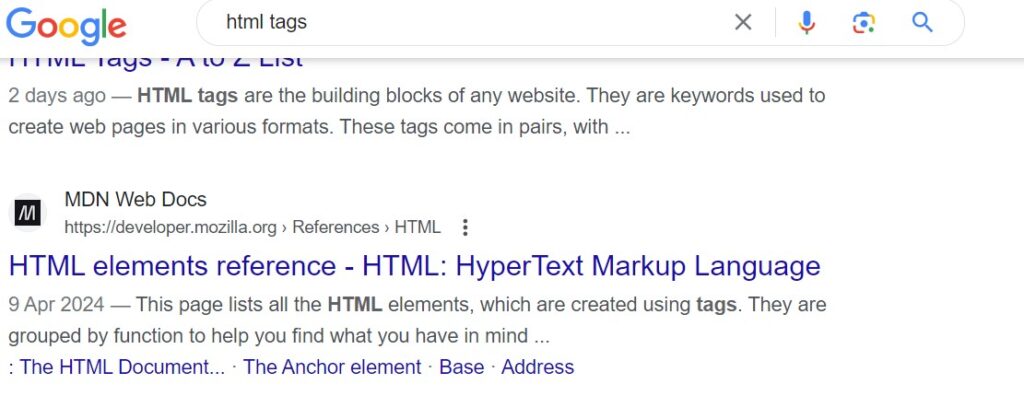
The search engines don’t make the keyword used in the domain a primary ranking signal and that’s good. However, the domain is your business it needs to be short and readable that’s going to make a great first impression. The next step in optimizing the URL is to name the page in a way that explains the content of the page.
INTERNAL LINKS:
An internal link is a link from one page on your website to another page of your Website. Now, this is important from a relevancy perspective. You’ll see internal links in your main navigation like having a link that says home, contact us, or about our company. If you click on the link “about our company” there you will find their contact information. These links are not votes like external links. However, they provide relevance and context to the information on your website.
KEYWORDS:
When a search engine crawls and processes your website, it doesn’t simply look for the instances of specific keywords. It’s a lot more complex than that. It’s using a technology called natural language processing which uses algorithms to try to understand the meaning of text. Search engine processing is attempting to be human. This is the same way that people see and hear the words and we’re using the words to find the meaning expressed in the words. Similarly, when a search engine goes to your website, it may seek keywords but it’s looking for the context of those words. You may say football, but just having the word football repeated throughout your website isn’t going to help you rank specifically for football. You need to use naturally additional words such as goal, referee, and world cup. Google and the other search engines are going to take these into account. By usage of other synonyms and other common words, you present the context of a bigger broader idea for your website.
Learn how to do keyword research using free tools.
SITEMAPS:
There are two kinds of sitemaps. There’s the sitemap that is for humans and the other one is for search engine robots, crawlers, or spiders. The one that is for humans is called an HTML sitemap. The link is generally in the footer of any website. It shows you the major sections of the website and provides some search functionality but looking at it as a human, it shows you the hierarchy of the website and where to find important information.
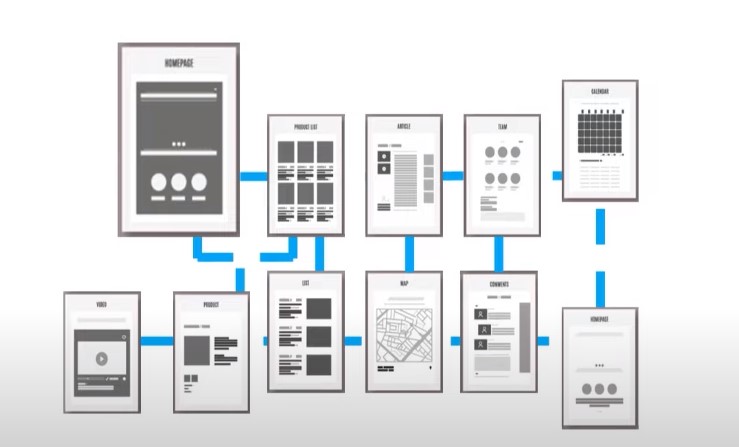
Now, there’s something called an XML sitemap. It’s not linked from any page of your website but exists as an independent file on your server. This is something you can see but it is formatted for search engine spiders. Using a programming language called XML it shows the hierarchy and the priority of each of the URLs of the website, every page, every document, and every image and it also shows the date that each page was last updated or changed.
At this point, we’ve covered a lot of things that are important and things that you should be doing when optimizing your on-page content.
You should not be doing keyword stuffing, hidden text, repetitive anchor text, and cloaking to rank your page.
Earlier, it is very easy to fool Google and people were highly using black hat ways to rank their website to the top search results. Some of the black hat ways is like making comment backlinks, forum backlinks, VPN or the private blog network and some other also.
Now, only the white hat ways of SEO works. It has become extremely difficult to rank your website if you’re following the black hat ways. You really need to provide quality content and add value to the user who is searching for the keyword.
Logically speaking, the results that answer the query the fastest and comprehensively should be ranked number one.
Let us come to OFF PAGE SEO now.
OFF-PAGE SEO:
It refers to action taken outside your website to impact your ranking within the search engine results page. ON PAGE SEO was all about taking action on your website, and OFF PAGE SEO is all about actions outside your website.
The primary OFF PAGE SEO element is link building or backlinks.
Backlink is the most important metric when we talk about OFF PAGE SEO. There’s a strategy behind the backlinks and you have to look at four key parameters when building backlinks to your website which are ‘follow Vs. No follow backlinks’, ‘Anchor text’, link juice and relevancy. Don’t worry we will be explaining all of these one by one.
BACKLINKS:
A backlink is created when one website links to another. The link between the two websites is the backlink. Let me show you, through an example.
The highlighted text shown down is linking to any other website when we click on it and this will be considered as back link someone’s website. Please note I have taken some random text to show you.
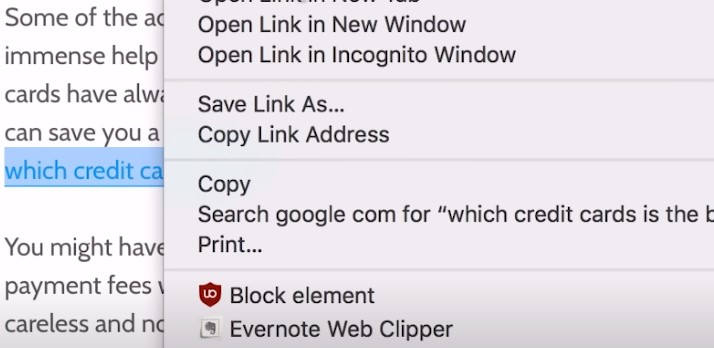
The rule of convention is the more backlinks you will be having, the better ranking you will get. But, that is not the correct definition, because there is so much more to a backlink. There are various other parameters like whether the backlink is a follow backlink or no-follow backlink, whether the backlink is coming from a relevant website or an irrelevant website. This all will let us know the quality of the backlinks.
We have added an extension called “no follow” in our chrome browser. Whenever it finds a no-follow backlink it just putted a red-dotted square around that backlink.

You can do check that by checking the source code of any article.
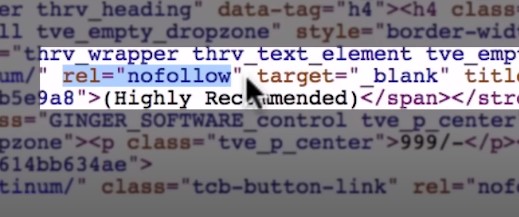
Whenever it will be a no-follow backlink, the power of my website won’t be transferred to the website we are linking to. All you have to understand is for follow backlinks that the power of the website is transferred to the website you are linking to.
Considering internal and external links, internal links are all the links that are pointing to the internal links of the website (other pages of same website) and an external link is a link that points to any other external domain. Next we have is anchor text.
Anchor text is the visible, clickable text in a hyperlink. In modern browsers, it is usually blue and underlined. Anchor text is the exact keyword, phrase used to create the backlink.
Now this is a very important part when we talk about backlinks. Google not only looks at the quantity of backlinks, but also at the quality of the backlinks. It considers all the factors like whether it is coming from an authorized website or not, it is linked with a more functional website or just a newly build one. Also, the relevancy of the backlink matters a lot.
Why should you even create the backlinks?
It’s simple that you need more organic free traffic. More the high-quality backlinks, the better ranking you will get in the Google search results and more traffic you’ll be driving for your website. When you are building backlinks, you are also getting extra traffics from the websites that are linking to you.
A backlink also help in brand building and also in building relationships with various other webmasters.
I am concluding it here, implementing white hat SEO techniques is essential to improve our website’s visibility ad driving organic traffic. By consistently learning about the same, you will get more understanding out of it. If you are facing any difficulty in understanding the concepts, you can also consider seeking mentorship from the experienced trainers of Digital marketing course in Delhi or joining online seo course.
